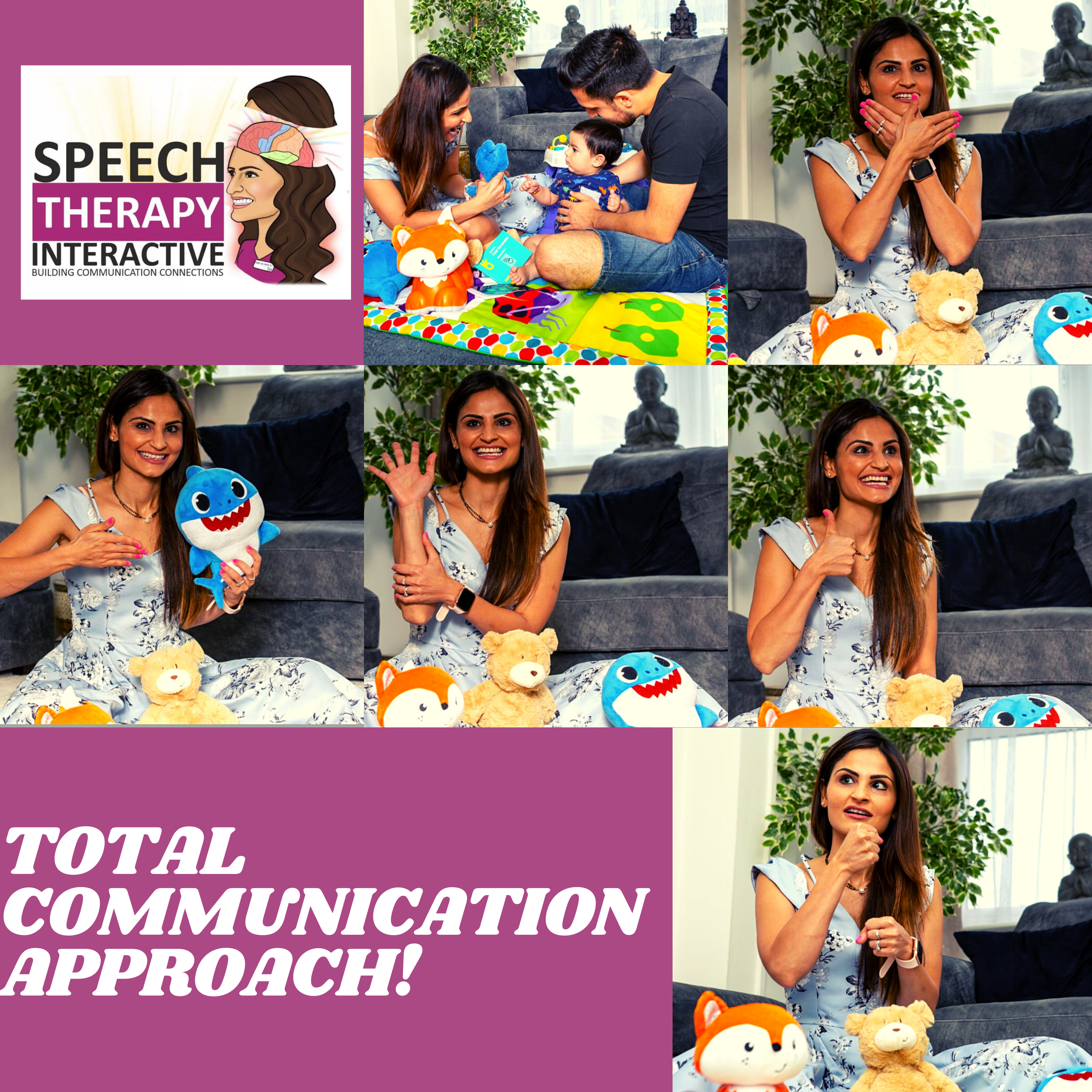Parents from all cultures eagerly await their child’s first words. In the first three years of life children move from coo’s and cries, the earliest forms of communication to combining phrases and sentences to express their wants and needs and retell stories. It’s pretty amazing and we live in a society that celebrates and values verbal communication. However did you know that 70% of our communication is non-verbal ( body language, gesture, facial expressions…)? We use a total communication approach.
Total communication approach includes a combination of the use of signs, gestures, pictures, object of reference, writing, verbal output, and technology to pass along a message to a communication partner. The earlier one starts to use some or all of these methods of communication, the greater the potential for improving a child’s communication skills.
Benefits of Gestures/ Signs using a Total Communication Approach
- Building communication prior to speech
It can be very frustrating for children, and especially babies, who are unable to communicate their needs. Simple tasks can become very difficult and leave children frustrated and isolated. Using gestures/signing with a child can allow them to get their needs across effectively and help them to interact with the world around them.
2. Supporting emotional development
Children who are able to use gesture/signing to communicate their thoughts and feelings will often have less tantrums or aggressive behaviour. This is because they are able to have conversations using a total communication approach ( using non-verbal communication) and can be understood fully by others.
3. Gestures and Signs enhance language development
Many may see using a total communication approach ( using pictures, objects of reference, gesture and signing) as a replacement for speech however it is not. Gesture/ Signing can be used alongside speech and although some children may begin to drop the gestures/signs once their language has developed, many will continue to use the gesture/signs. It is suggested that by using the signs to accompany speech, children will have a deeper understanding of the words they are learning.
4. Signing may increase a child’s IQ and their reading/spelling skills
Research suggests that children who are taught to sign early in their life, end up with better skills in reading and spelling- and may even have higher IQ scores later on in life.
5. Building attention and listening skills
Having sound attention and listening skills can be difficult for young children, especially babies. They may find it difficult to pay attention for a period of time or focus on an individual when they are talking. Using gestures and signs can support this development, giving children a visual focus whilst also using their listening skills.
6. Strengthening relationships
Teaching children gestures/signs can support the bond between adult and child. It requires you to be down at the child’s level and focus your attention on the signs. Verbal communication can easily lose this aspect, with language being used in passing without the need for eye contact and good attention. Using gestures/signs can support children to feel valued and understand that their thoughts and feelings are important.
7. Promotes fine and gross motor skills
When using gestures/signs, the children are practicing and developing a range of fine and motor skills. Some hand signs may be similar to another and will require the child to position their fingers or hands in a particular way to differentiate the gesture/signs. This can be tricky at first but with plenty of practice, children are able to use gestures/signs very well!
8. Brings people together and is enjoyable for everyone!
Using a total communication approach helps bring the community together and supports everyone in being involved. The children love to use the gestures/signs and share these with others during activities, especially singing. Using gestures/signs at home and in the community setting can help the children to have a sense of importance and boost their self-confidence alongside their language and communication skills.
It is important to look beyond verbal words and embrace a total communication approach.
Your SLT Tina Kad (Specialist Speech & Language Therapist).
Sign up today for unlimited access:
- Book appointments
- Expert advice & tips
- Premium videos & audio
- Curated parenting newsletters
- Chat with your bloss community
- Discounts & competitions
- Special events




Leave a Rating / Review
You must be logged in to post a comment.